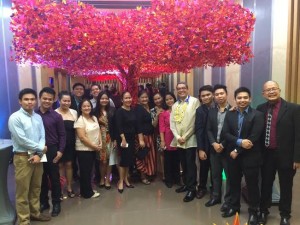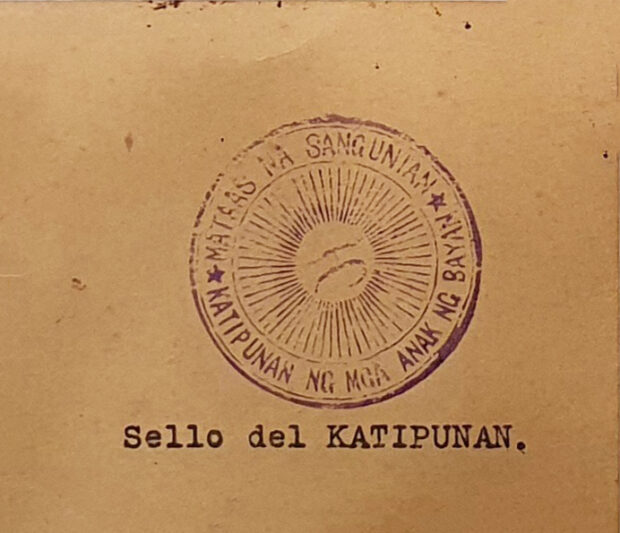
GERMAN Moreno called for the conservation of the Metropolitan Theater while actor Xian Lim proudly posed before a large fantasy portrait of a woman in Renaissance costumery he himself had painted.
Meanwhile, José Rizal flashed the victory sign as he photobombed Luneta Park promenaders taking selfies with the Rizal Monument and Torre de Manila.
The last was pure fantasy, of course—an art installation that commented on the raging controversy over the Torre de Manila and the petition facing the Supreme Court seeking its demolition for allegedly marring the skyline of the Rizal Monument.
The fact that the controversy had figured not only in the courts but also in the largest and longest art fair in the Philippines should indicate that art and heritage complemented one another as far as the art crowd and market were concerned.
Artist Bonifacio Juan’s two-dimensional, multilayered installation and deconstruction of the Torre de Manila controversy depicted Rizal as both photobomber and vandal.

With one hand making the peace sign and the other holding a can of spray paint, a cheeky Rizal photobombs fairgoers having their photos taken. In the process, Rizal spoils as well Torre de Manila, on which the national hero has spray-painted the words “ManilArt 2015.”
With viewers lining up to have their photos taken with Rizal (who was dubbed by many as Pambansang Photobomber), the deconstruction proved a crowd favorite early in the fair, along with Juan’s other installation, a canopy of paper butterflies.
To engage as many people as possible, Juan’s creations were strategically placed on the SMX Aura lobby, making the installations accessible to all—even to those who didn’t intend to enter the art fair.
Met Theater, Gabaldon
ManilArt 2015 also became a platform for the conservation of the Manila Metropolitan Theater and Gabaldon school structures.

A roundtable discussion titled “Remembering the Met,” although not open to the public, allowed the National Commission for Culture and the Arts’ (NCCA) Subcommission on Cultural Heritage to plan its conservation scheme for the Metropolitan Theater.
Respected figures in Philippine theater also joined NCCA officials in the dialogue. Among those present were Audie Gemora, Floy Quintos, German Moreno.
Moreno, Mister “That’s Entertainment” himself, had worked in the prewar Metropolitan Theater as a telonero (curtain-raiser). Teary-eyed, he urged NCCA and government to conserve the Met and make it operational again.
Meanwhile, an exhibit by the Department of Education promoted the conservation and protection of Gabaldon heritage schools all over the country. Photos of these schools were exhibited in ManilArt 2015.
Even the ManilArt 2015’s Metrobank Lecture Series touched on a sensitive topic: the law that dictates the inclusion of private collections—including artworks—in the Philippine Registry of Cultural Properties or Precup.
In “Private Collectors and the Precup,” lawyer Lucille Karen Malilong-Isberto, head of the NCCA National Committee on Monuments and Sites, tackled the legalities and gray areas of the Precup, and how this could and should affect art collectors and their private property.
Other talks were “Art and Healing,” featuring clinical psychologist Beth Morales; and “Art Go Bag 101,” in which Lulu Joson del Mar of the NCCA National Committee on Archives gave tips on how to protect prized pieces even when natural calamities strike.
ManilArt 2015 also provided art education for youngsters. About a thousand high-school and elementary students from public schools in Taguig joined the Walking Tours, conducted by art professors Gerry Torres and Chong Ardevillas.
Fitkids Camp cofounder Anna Escalona and Children’s International Summer Village counselor Lionel Santos, both artists, also held workshops for children.

Other highlights
Another highlight of ManilArt 2015 was the festive opening night.
The two-part exhibit “The Philippines in Venice” juxtaposed Manila’s 1964 participation in the Venice Biennale (which featured Napoleon Abueva and José Joya) with the Philippine Pavilion now gracing this year’s edition of the Biennale.
A reception was held for the team behind “Tie a String Around the World,” the country’s entry at the 56th Venice Biennale.
In attendance were Sen. Loren Legarda, curator Patrick Flores and artist José Tence Ruiz.
Aside from the Biennale celebration, fairgoers were also delighted by the appearances of celebrities.
Actor Xian Lim attended the VIP opening not only as a guest but also as a participating artist. His painting, “Pathetic Novelty in Plateau,” was featured at the booth of Ysobel Gallery.
Assunta de Rossi also dropped by to see a work she and husband Rep. Jules Ledesma had commissioned in 2003 from sculptor Ramon Orlina. The magnificent “Tree of Life” is a champagne fountain now on view at Museo Orlina in Tagaytay.
An integral part of the art fair—and perhaps its strength —is the visual spread provided by the art galleries.
“The activities conducted at ManilArt are pursuant to the mandate of the National Committee on Art Galleries (NCAG), which, by legislative charter of the NCCA, is one of the 19 national committees tasked to represent the cultural sector in the promotion of heritage, particularly in acknowledging and fortifying the roles of commercial galleries and professional enterprise as part of creative industry,” said lawyer Amy Loste, ManilArt organizer and former NCAG head.
“The institutional and the private sectors both play important roles in the cultural infrastructure, which aids in boosting a robust and creative economy.”
Other galleries featured in ManilArt 2015 were 1335 Mabini, 371 Art Space, Archivo, Arte Pintura, Artery Manila, Artes Orientes, Art for Space, Art Galileia, Artologist, Big and Small, Galerie Anna, Galerie Artes, Galerie Francesca, Galerie Nicolas, Galerie Raphael, Galerie Y, Gallery Big, Gallery Nine, Quattrocento, Renaissance and Vmeme.














































